Googling Mysuru Heritage Streets indicates long stretches of roads connecting main roads and thoroughfares with many small and lesser-known streets with its sections still referred to by old names. This dichotomy and historical ecosphere is sprinkled across the map of Mysuru and there is a mix of the archaic and avant-garde names, where British officials and Wadiyars share avenues with Indian luminaries and local heroes.
Many roads present a densely-packed urban fabric with a rich architectural heritage from the Wadiyar period. The Heritage streets of the city still have their unique charm, some of them bearing interesting history of the past.
Join Senior Journalist Gouri Satya in this Weekend Star Supplement on a quest of Mysuru city’s finest stories behind the names of streets and explore the nooks and crannies.
By Gouri Satya, Sr.Journalist
[Pics. by M.N. Lakshminarayana Yadav]
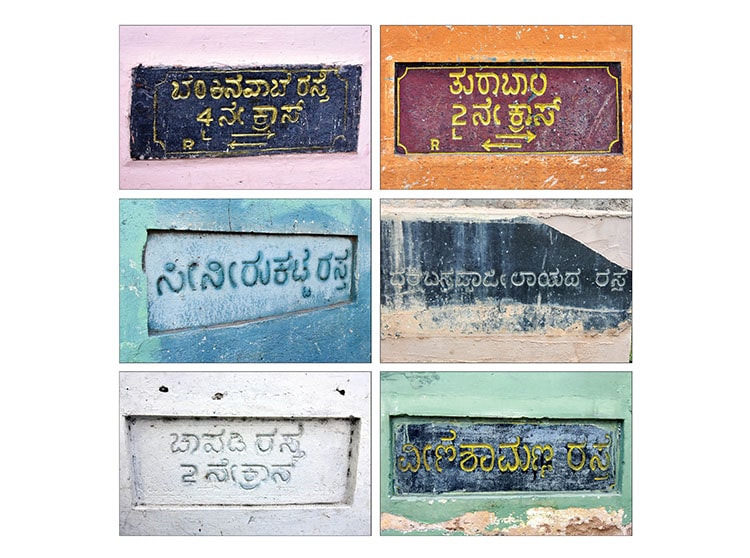
What’s in a Street ? Name and Fame
Like Mohallas, Purams and Keris, streets in Mysuru have history to tell us. Many of the streets in the old city have hidden stories behind them and if compiled it can become a separate volume. They have so much of history to reveal we know very little or nothing of it.
These historic names have contributed much to the culture and heritage of our old royal city, about which we should take pride. Let me try to bring to the fore the hidden history of some randomly chosen streets in this article. Besides these, many other old streets and roads in Mysuru have hidden history to reveal. It is well worth tracing their historic background and walk back in time to the days of old royal Mysuru, may be of the period of Tipu Sultan or the Wadiyars.
It is these old streets, Mohallas and Keris, and landmark buildings and roads of the colonial era, which have contributed to the history and culture of Mysuru. This hoary past of history and heritage of this great city, a city of the royals and their dedicated subjects, needs to be preserved and protected, instead of destroying it. It is on such places cities elsewhere have built up their popularity and entered into the UNESCO heritage sites.
Pond of Goddess and Shiva Temple
The Devi Kola which literally means a pond of the Goddess on the Ramanuja Road. Apart from this beautiful pond amidst concrete structures, there is a temple of Kashi Vishwanatha or Eshwara inside the structure that at present looks like a haunted house.
Regular pujas are conducted inside the temple and there is a stream of visitors who come here every day. While the younger generations are unaware of this temple, many elders come here.
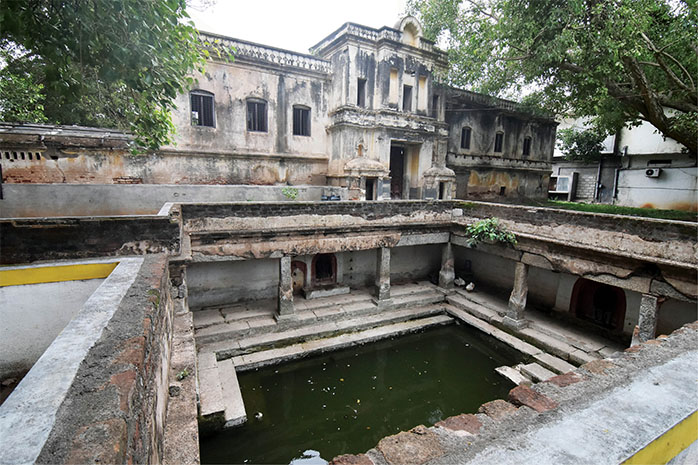
Local residents say that the property belongs to erstwhile Mysore royal family. The pond was earlier used by the residents to immerse Ganesha idols and due to the constant idol immersion, the pond was closed with weeds growing all over.
Three years back, a team of Good Samaritans cleaned up the pond and now a protective concrete wall has been built around the pond to prevent people from falling into the water. All local festivals including Maari Habba and marriages used to start earlier from this point. It was a starting point for the women to carry the auspicious Kalasha for any event.
A tank for growing greens [Soppina Kola Street]
Soppina Kola Street in Agrahara of Krishnaraja Mohalla connects the Chamaraja Double Road with the Vani Vilasa Road. This street is now named as Renukacharya Street. As the very name indicates there was a small pond there and poor women of the area made a living by growing greens (Soppu) and sold them. Once the area began to develop, the small water body which had a spread up to the Thyagaraja Road disappeared and new houses and structures of cement and concrete came up all around, leaving an open place in the middle, where on one side the Mysuru City Corporation has a Mohalla office.
Similarly, the present Basaveshwara Road linking JSS Hospital in Fort Mohalla with Ramanuja Road in Vidyaranyapuram was called “Seeneeru Katte Beedi” or street. There must have been a water tank (katte) which provided sweet water to the residents there for drinking purposes. As the road lead to the ‘Katte’, it came to be known as “Seeneeru (Sihi Neeru) Katte Beedi” or street.
There were a couple of such tanks within the old city of Mysuru and in particular in low lying areas providing water to the local residents about a century or two ago.
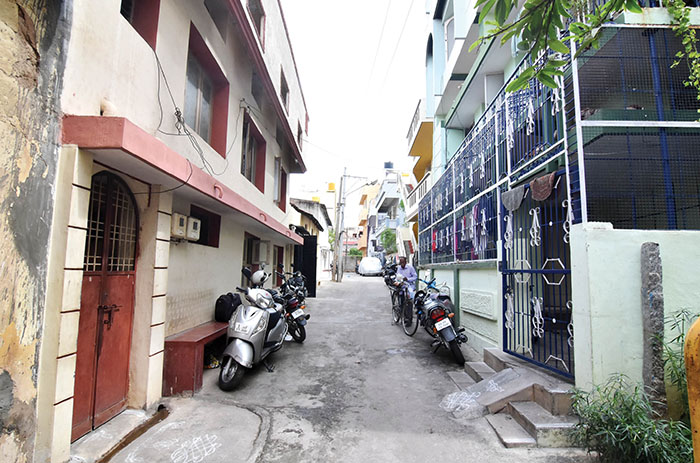
Kothwal Ramaiah to guard
In Devaraja Mohalla, from Dewan’s Road, where it connects Dhanvanthri Road, up to Shivarampet Main Road, there is a Kothwal Ramaiah Street. Ramaiah was a Kothwal. Kothwal means Policeman. Kothwals were present during the middle of 1800s when Maharaja Krishnaraja Wadiyar III was reigning. The Head Kothwal had magisterial powers equal to those of an Amildar.
B.L. Rice in his book, “Mysore in General”, writes, “The Bangalore Police was reorganised in 1861 and the Head Kothwal made Sir Amin, with magisterial powers equal to those of an Amildar,” Ramaiah was one such Kothwal in Shivarampet. The near-by Jeevannarayana Katte was a water body then. Rain water flowed down from the upper levels and filled up the low-lying tank during the rainy season. People living around were going to the tank in the early hours of the morning to take a bath and fetch water to their homes. As there was no piped water supply those days, people residing in different localities had to depend upon the nearby tanks for water and that was the reason Mysuru had many tanks and channels.
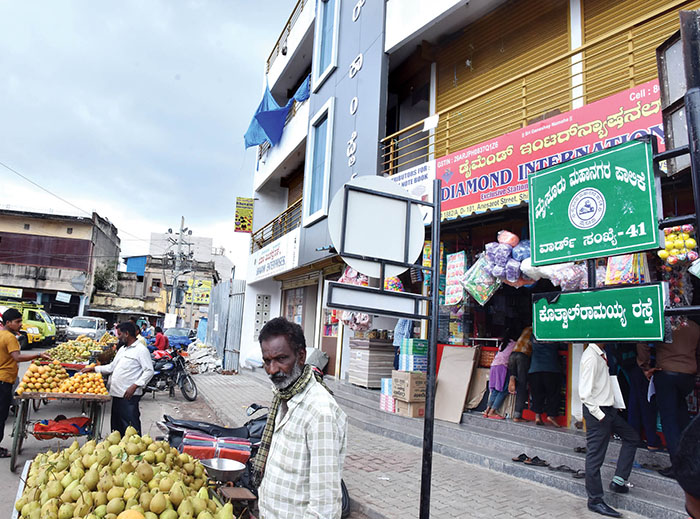
The Kothwal kept a watch at such places to ensure the safety of people, particularly women who went early to the tanks. Generally, he was from the same area. Ramaiah was one such policeman who ensured safety of the people residing near Jeevannarayana Katte.
Street for elephant-drawn Sarots
It was earlier known as Devaparthiva Agrahara Ane Sarot Street, behind Mannar’s Market in Shivarampet, links Dufferin Clock Tower in Devaraja Mohalla. It is a busy commercial street today running via Boti Bazaar. It is not clear how this street came to be known as “Ane Sarot Street.” However, as the very name indicates, Muslim residents in this area were perhaps either making elephant-drawn chariots, as we see one being taken out in Vijayadashami procession on the last day of Dasara, or were good in repairing and restoring them.
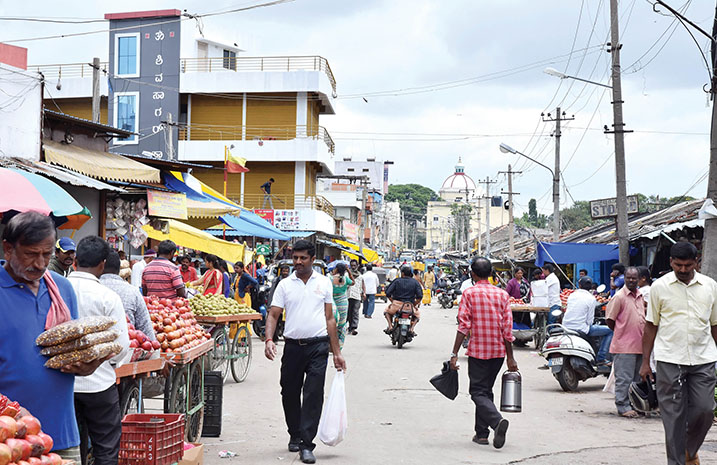
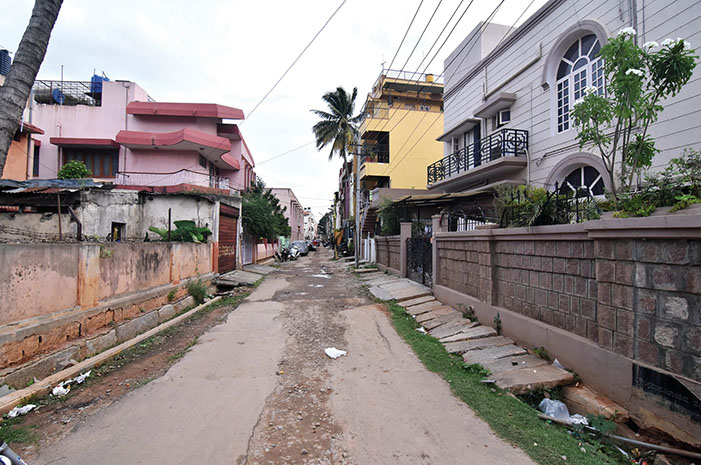
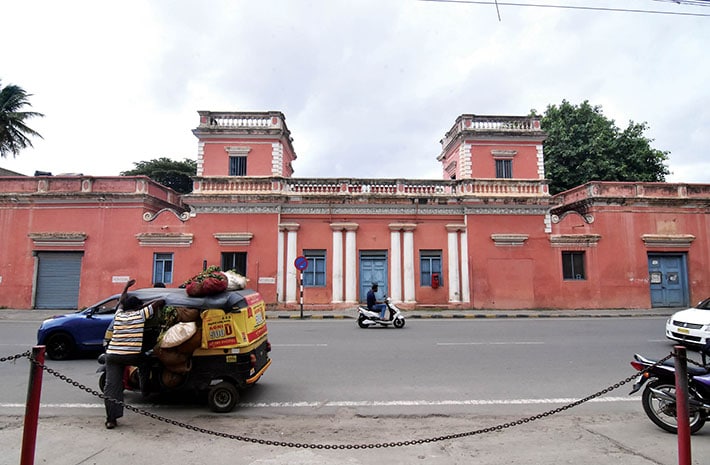
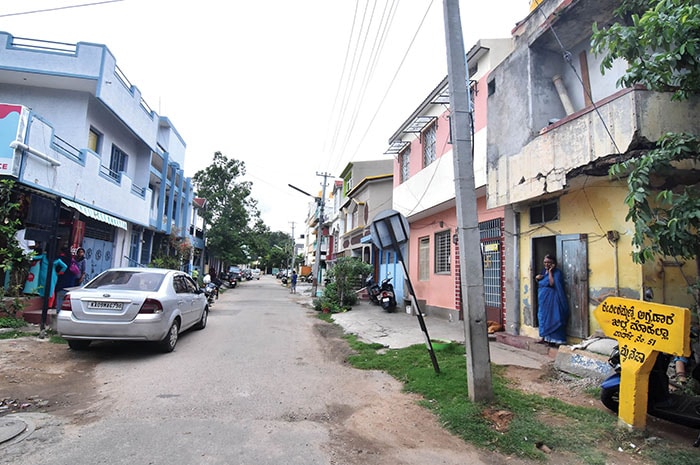
Venkata Subrahmanya Iyer becomes Shamanna
‘Veene Shamanna Road’ at Old Agrahara near Agrahara Circle is dedicated to Veene Shamanna who was the court musician in Mysore and Tanjavoor. Shamanna was one of the renowned musicians of the Mysore Royal Durbar over 300 years ago.
Veene Shamanna’s grandfather, Lakshamana Bhagwata travelled from Tanjavoor, in Tamil Nadu, in 1728. Venkata Subrahmanya Iyer was Veene Shamanna’s original name and because of his bluish black complexion, elders and relatives affectionately called him Shamanna.
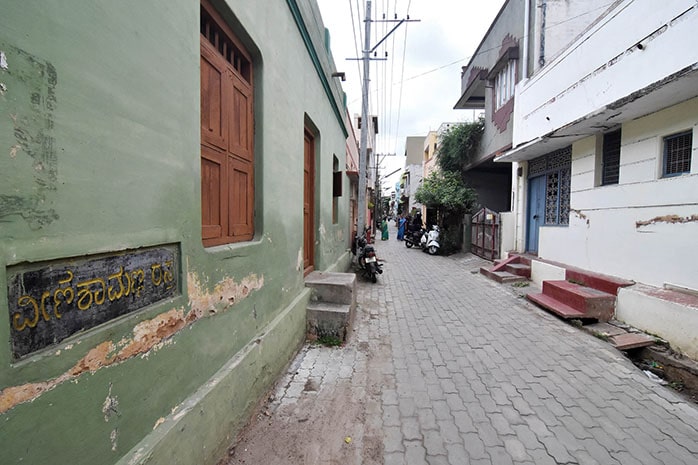
There are many interesting anecdotes about Shamanna’s proficiency in music. Once a prominent visiting musician from the Northern part of the land came to Mysore Palace and threw a challenge to beat him by playing a ‘Shatkaala Pallavi’ on Jalatarangam.
Shamanna took up the challenge and played the ‘Shatkaala Pallavi’ and played a few more Pallavis, baffling the musician from the North who quietly left the place, accepting defeat. The Maharaja honoured Shamanna with a cash award of 1,500 Varahas.
Vidwan Shamanna was the only Asthana Vidwan who taught three consecutive generations of Mysore kings — Mummadi Krishnaraja Wadiyar, Chamaraja Wadiyar and Nalwadi Krishna Raja Wadiyar. He was the first music teacher of Nalwadi Krishnaraja Wadiyar’s sisters also.
Turab Ali and his Machine Gun
There is a less-known Turab Ali Street in Mandi Mohalla. But, who is this Turab Ali? Mir Turab Ali enlisted himself as a sowar (Mysore Lancers sowar and horse: The method of carrying small arms ammunition in a bandolier on the man and around the horse’s neck.) in the Imperial Service Lancers in 1903. The Imperial Service Lancers had been formed in 1893 with headquarters in Bengaluru for Imperial Service.
Turab Ali was only about 18 years old when he joined the Service. His intelligence and energy provided him opportunities to secure rapidly higher and higher positions and he left for active service to Egypt in October 1914. On arrival, he was detailed to undergo machine gun training and scarcely a week-old at this course his skill came to be tested during an attack on a Turkish redoubt at Belel-Mahadat. By the time Turab Ali fired 300 rounds out of his machine-gun, the gun got jammed. But the fire was so effective that those who survived beat a hasty retreat.
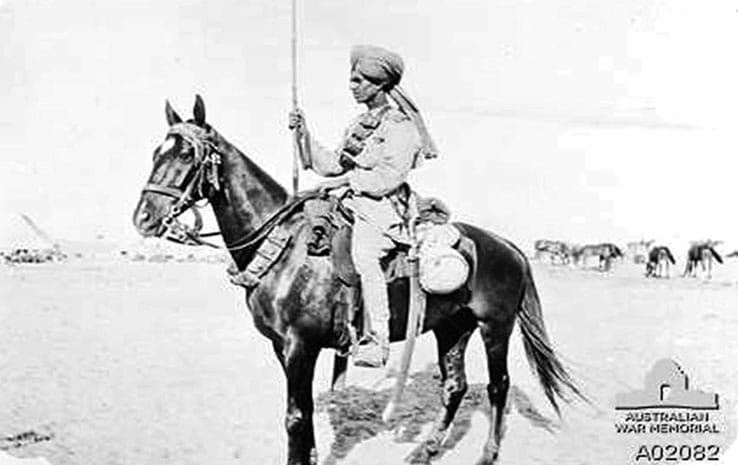
Turab Ali got his commission as Jamadar in January 1915 and was placed in charge of a machine-gun section. From then on, he actively took part in every engagement in which his regiment took part and specially distinguished himself in the attack upon Gaza in Palestine. He was for some time appointed instructor of the 15th machine-guns squadron. He trained two sub-sections of the Bikaner Camel Corps and Jodhpur Imperial Service Lancers.
Turab Ali accompanied the Imperial Service Cavalry Brigade to the Palestinian city of Jericho and took part in several engagements. For the display of gallantry and devotion to duty, his name was mentioned in despatches. He also took a conspicuous part in the capture of Haifa in Israel. Under a heavy fire of machine-gun and artillery, he led an attack upon a hillock capturing a Turkish officer, four machine-guns and other booty. One of these guns was brought to India by the regiment as a war trophy.
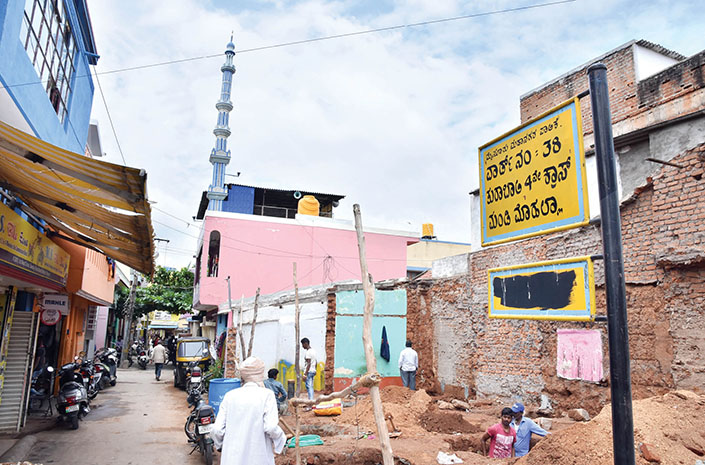
For these distinguished services, Turab Ali was awarded the Indian Order of Merit and the Maharaja promoted him to the position of a Risaldar. Turab Ali’s historic background lies hidden in the street named after him, very few knowing his valour and fame.
The Nawab who brought Fire
Another street which has a historic background in Mandi Mohalla is the Benki Nawab Street. This street is named after Muhammad Reza, who was senior military commander in Tipu’s army. This Sirdar was famous as ‘Benki Nawab’ or ‘Binki Nawab’. The word ‘Benki’ in Kannada literary means ‘fire’, as we know.
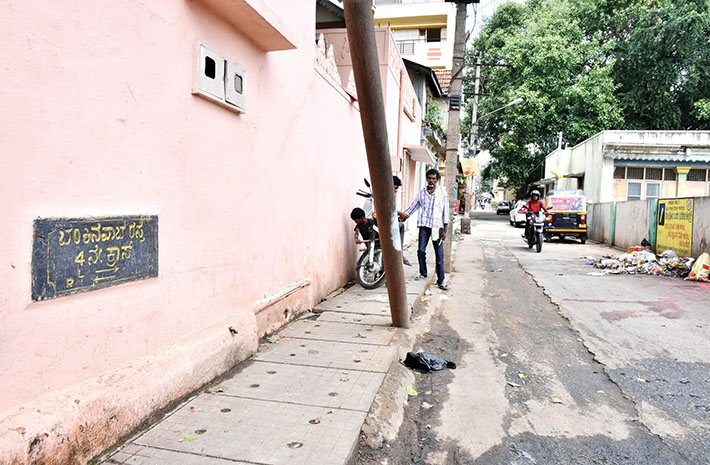
Muhammad Reza was terror to the enemies as he brought fire and destruction to them. He caused devastation wherever he fought, and burnt alive the captured people in Malabar, apart from other enemies. While fighting against the British and their allies, he was killed at the battle of Siddheswar on March 5, 1799, two months prior to the defeat Tipu faced in the 4th Mysore War against the British and met an end. Subsequently, Benki Nawab’s family and relatives settled down in Mandi Mohalla and the road came to be known after him.
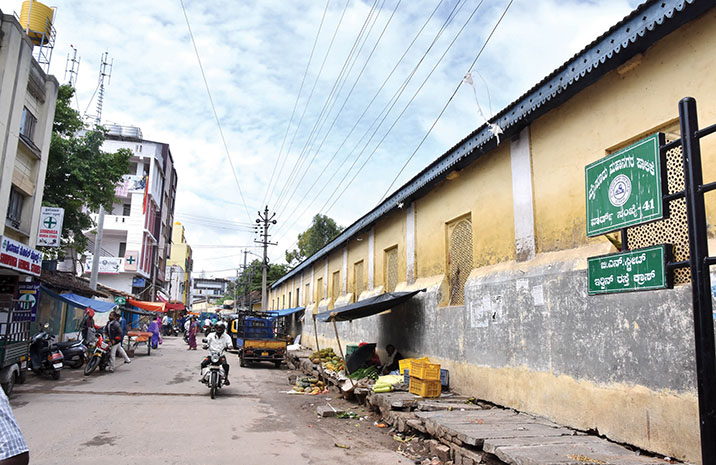
Writing about him in the History of the Sultan, Mir Hussain Kirmani records in 1802, “The troops of the Sultan, however, still followed them and vigorously attacking them again, strained every nerve to rout and destroy them. At this critical period Muhammad Raza, Mir Maran, having by much entreaty obtained from the presence leave to charge, proceeded with his division like a raging lion towards the enemy, and stretching forth the arm of valour, it went near that the whole of the enemy’s army was cut up and destroyed.”



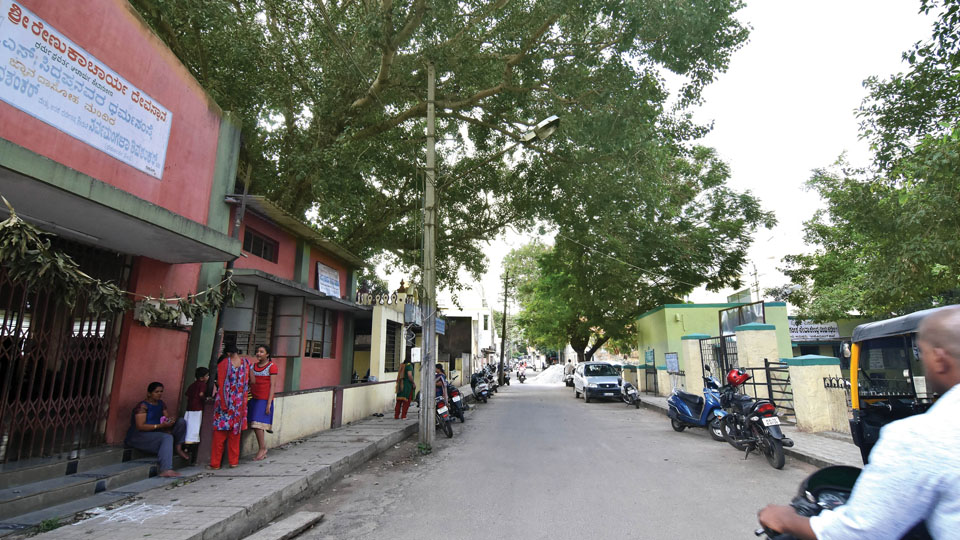
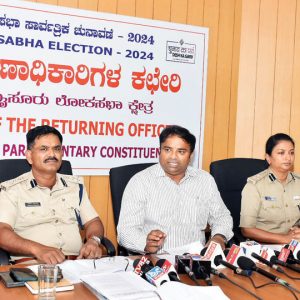

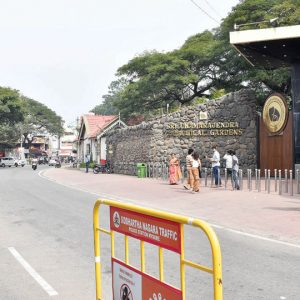
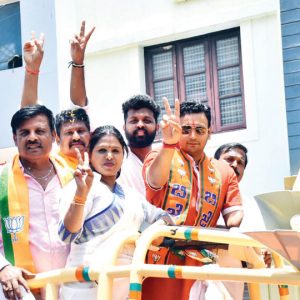
beautiful article by gauri satya ,thanks SOM
SIR,
THANK YOU FOR PUBLISHING OLD HISTORY OF MYSORE AND PEOPLE OF PRESENT GENERATION AND PEOPLE WHO HAVE COME FROM OUTSIDE STATE WILL GET INFORMATION HOW MYSORE CITY DURING THE RULE OF LATE MAHARAJAS OF ERSTWHILE MYSORE STATE. ESPECIALLY PEOPLE OF NORTH INDIA WHO ARE WORKING IN RAILWAYS AND CENTRAL GOVERNMENT SHOULD KNOW THE INFORMATION AND MAINTAIN THE SAME HERITAGE AND MAINTAIN THE BEAUTIFUL CITY OF MYSORE CITY.
Thank you very much, Gayathri.
Thank you very much, Mr. Shekar.
The large decorated Ganesha Idol kept for worship during Ganesha festival days,celebrated for many days at the Maharaja’s Sanskrit College, used to be taken up in a procession with Nadaswara recital and Vedic chants from the Maharaja’s Sanskrit College premises to the Devi Kola’s premises and immersed in that pond in the Devi Kola premises, with an impressive Nadaswara music and Vedic chant demonstration by expert swimmers who were students of that College. This ritual continued for many decades and attracted spectators who lined up the streets along the procession route. I as an youngster,and a part-time Sanskrit student in the above College, joined to improve my knowledge of Sanskrit to help with my high school Sanskrit lessons,used to be part of the procession in 1950s. Living in a Western country now, I still have a pleasant memory of this procession and the immersion of the idol.
The Wadiyars generous contributed towards the expenses for the Ganesha worship at the above Maharaja’s Sanskrit College which as the name suggests was started byMummadi Krishnaraja Wadiyar. The College offered courses up to proficiency levels in Sanskrit, Vedas, Philosophies, Agamas, Carnatic music-the legendary Vasudevachar was involved with the teaching at one time,as well as in Ayurveda. The philosophy teaching meant close links with Maharaja’s College and Sarvepalli Radhakrishnan at one time. The College boasted the alumni from all parts of India when it was flourishing both as a private institution under the Maharaja’s as well as as a government institution there after. I think it still is a College offering specialist courses in Sanskrit and allied subjects. The late Rajendra Prasad who was a Sanskrit scholar visited this College in 1950s and met us to have a chat during his visit. He talked to us in Sanskrit to show what a great language it was.
What a wonderful article! Knowledgeable, carefully researched and Gouri Satya’s love for Mysore and its past is clear. To see anything in the light of its past adds layers of meaning to it. Hope the author and commentators like “Strange world” and others will contribute to our feeling for our heritage, one of those intangibles which add immeasurable value, but whose importance we sadly discount.
Thank you very much Strangeworld for the excellent input! I was not aware of the procession though I knew about the annual worship of Ganesha during Ganesha Habba in the Sanskrit College hall. The idol is still there and offered pooja daily. The College has lost its original glory with many courses not drawing either scholars to teach or students to learn! A sorry state of affairs indeed. The Govt. should have converted into a Sanskrit University. That status perhaps would have helped the college imporve its status and fame. But who cares at the Govt. level!
Thank you very much Mr.Govind Pai. You are right. Our heritage lies in the cultural growth that is unique to Mysore. My effort is to highlight this intangible asset, part of which still survives in Keris and Mohallas. My effort will continue in this direction.
@Gouri Sathya. Thanks, and I should apologise for the dreadful typos which crept in my reply above.
Perhaps, I should explain that each year Maharajah’s Sanskrit College , I understood was given funds By the Palace ( a tradition dating back to decades then) to buy a Ganesha Idol and to celebrate Ganesha pooja as per the agama practice. It is this idol which used to be taken in a procession and immersed in the pond at Devi Kola. The procession usually consisted of chosen members of staff of the College and a few selected students, and the procession route was short as the distance between the College and Devi Kola is about 3 furlongs. Nevertheless, this procession attracted good attention.
As for this College upgraded to a university, there was a limited proposal then to merge this College with Maharajah’s College and the Oriented Research Institute-the latter two of Mysore University. It fell through, partly because there was an agitation by a well known very influential poet at that time, who wanted Sanskrit as a subject to be removed from high school and university curricula, as he spurious argued that students taking Sanskrit as the elective subject scored easy marks! The person was ignorant as Sanskrit grammar, and usage of concatenated Sanskrit words which is norm in the works of great Sanskrit poets and authors are tough to learn , akin to German grammar and German usage of concatenated words. Any way, Sanskrit thrives in universities in the West like in the universities of Heidelberg in Germany, Oxford, Edinburgh, London in the UK, and a few universities in N. America. Fortunately, Sanskrit is seriously studied in institutions like Bhadarkar Oriental Research Institute in Pune and in the BHU.
I had a few friends who lived in ‘Veene Shamanna Road’ who I used to visit regularly those days. The road is very narrow, and I always got the feeling that I was walking in a tunnel with houses on both sides of the road trying to squeeze me in! I used to wonder then about the resident there and a few times asked their experience s of living in houses on that narrow raod!
@Strangeworld. Thank you very much for narrating your experience of yesteryears in Mysore. I know while we are neglecting Sanskrit, it is thriving elsewhere in the West! And, there is politics and other issues in opposing it. Veene Seshanna Road and Veene Shamanna Road continue to be narrow, like some other streets in the Agrahara. But, in these narrow places lived some of the distinguished personalities of Mysore, the memory of whose is itself takes back to the old cultural glory of Mysore, much of which we have lost. But, that is the price we pay for ‘progress’! Thanks again. Keep posing your past experience of Mysore. By the bye, forget about typos. They do creep in missing our attention!
@Gouri Sathya Finally, the contribution to the development of Mysuru by Dewan Sir Mirza Ismail is often overlooked. The genius of Nalwadi Krishnaraja Wadiyar was to pick the right Dewans for his state development. Sir Mirza’s part in shaping Mysuru of those days was immense. Whilst, on the subject of Maharaja”s Sanskrit College, many may not remember his unique contribution to keep this institution running, and his enthusiasm in ensuring that those out-of-state students who come and study there, got their accommodation on the premises, and to this end, he was responsible for construction of students’ living’ rooms. Sir Mirza’s many contribution was the talking point of my father’s friends ,when they reminisced in 1950s,which I heard as an youngster. When I was in middle school , we were asked to refer to a book called, “Mysore Kaipidi”, by our teacher-a difficult- to- obtain book, and it was lent to me one of my father’s friends and in this connection, the discussion of Sir Mirza’s years took place.
Perhaps,you might like to discuss Sir Mirza in an article? Thanks.
@Strangeworld. Thanks for posting about Sir Mirza. I was not aware of his role in respect of Maharaja’s Sanskrit College. I will also check whether ‘Mysore Kaipidi’ is available in any library here so that I can have the entire book photocopied. Sure, will write about Sir Mirza. Thanks again.
@Gouri Sathya
Your articles highlight the facets of the city through its streets, purams and mohallas. The names of the latter were simple and yet very meaningful.They highlight how they came into existence. They added to the grandeur of the city when they evolved.
The 1950s Mysore and Bangalore,which,I was lucky enough to witness in all their grandeur bore testament to the greatness of Krishnaraja Wadiyar and his galaxy of Dewans.
Words do not describe enough, the contribution Krishnaraja Wadiyar made in modernising the city as well as the state,which bore the same name. To a large extent,her highness Vanivilasa Sannidhi shaped the development of the young Krishnaraja Wadiyar to ensure that he becomes a great Maharaja, and he did. The part played by his tutors such as Stuart Mitford Fraser and his Indian colleagues was huge in shaping the character and the outlook of the young Maharaja. Stuart Mitford Fraser, who became Sir Stuart Mitford Fraser as the Resident of Mysore later too encouraged the his former tutee who is now the Maharaja in his effort in modernising the city and the state.
Correction: Should read: ‘ Vanivilasa Sannidhana’
@Strangeworld, thank you very much on your nostalgic trip recalling the glorious days of the 50s! Chamaraja Wadiyar, Krishnaraja Wadiyar IV and Jayachamaraja Wadiyar were all tutored well with able and trusted persons and this also indirectly contributed to the growth and development of the n Mysore State. It was the golden age of modern Mysore. Thanks again.
@gouri Sathya As some who was born, bred and worked for some time in Mysuru, your narratives demonstrate the quaint historical perspectives in respect of development of Mysuru. Creating streets where people who belong to the same trade/producing same product, show this quaint but wonderful nature of this Royal city. Although Mysuru attracted immigrants in other states during the bygone years, this was fairly limited and was always linked to the activities the Royals encouraged, various arts for example. Until about the beginning of 1960s, Mysuru was a tranquil place with limited industrialisation. Bengaluru on the other hand, developed differently with vast swaths of areas which were ideal for the settlement of immigrants from other states: Basavanagudi, Malleswaram were examples. There was remnants of colonial culture too in the cantonment area; in the after math of Indian independence ,when it became the capital of the state in early 1950s, its latent commercial and industrial potential ( which perhaps Kempegowda realised it) was unleashed, and the rest is history. Interestingly, like the examples of Mysuru and Bengaluru,one could see other examples around the world: like, Washington DC and NewYork city, Melbourne and Sydney, where the firtcity in each pair maintained quaintness and history for long, where as the second city in each pair attracted immigrants from around the world. As more and more people arrive from other states for example to Mysuru and around the world in the case of above pairs, the transformation always for the worse ensues.
Dear Satya:
I am a regular reader of your articles in Star of Mysore about Mysore city. There may be many people who know about these facts, but you are the only one who could write very about them. The photos are also Very good. I hope someday you will consolidate all these articles and publish in a book form (with lots of old photographs). It is needed for the new generation who don’t know anything about the growth of Mysore city. Further, it will be nice if you start Mysore city history from the beginning (that is when the capital moved from Sriranga Patna to Mysore. I was told that initially the whole city was within the palace complex.
Thanks, Keep it up.
A. R. Char
Dear Mr. Manava. Thanks for your interesting comparative view of the development of cities. I too found a similar development abroad during my tours. As you rightly said, Mysore’s unique features are being lost because of the immigration of people from other places, who know very little about Mysore’s uniqueness. Thanks again for your comments.
Dear Mr. A.R. Char, Happy you are enjoying reading my articles and also for your suggestions. In fact, my book on Mysore, highlighting some of its unique aspects and past, is already published under the title, “Mysuru Memories” by the Department of Archaeology, Museums and Heritage, Mysuru. I am presently working on two more books. Once that is completed, I will go for a compilation of my articles on Mysuru, which is already in my mind. By the bye, your name sounds familiar!
Dear Satya:
It is funny the way old Mysoreans are connected to one another. Your oldest brother was my oldest brother’s friend, you are my brother’s friend and I was your younger brother’s friend. We were neighbors of your uncle in Cheluvamba Agrahara. Of course my street name was different from my official name.
I met your youngest (?) brother Shekar, NIE principal at that time, in USA about 2 years back (he was a baby when I was in India). I have met many Mysoreans around the world and in just a few minutes we could trace our close relationship. In Mysore everyone is separated with one another in just 2 degrees of freedom. Old Mysore was just a big village where everyone knew about everyone. There was no privacy!
Nice to remember old times,
A. R. Char
@A.R. Char. Happy to know you are not a stranger but a family friend with over a seven decades’ background! You have nicely put it also. Of course, I can expand it further and say your mother was my mother’s friend and your sister was my sister and cousin’s, friend! That way, we all knew each other! Shekar told me how you met him in the US and showed the photo too. I was happy to see you in that photo. Thanks for your comments on my article and happy we could renew our contacts with it. Cheers.
Yes, a narrative of good days of past, when Mysuru was a compact city with defined boundaries, and population of India was less than a quarter of what it is today. The ravage of the overpopulation is reflected in the badly maintained streets that one could see in the photographs.
BTW,it looks like the Facebook circle of friends and friends!
Mentioning NIE, I for some one,who knew the institution well, can only say what an opportunity was lost due to follies of office staff promotions, made by the then management motivated by narrow interests, just when it was about to be taken over by Mysore university and developed into a university engineering college in late 1960s. A golden opportunity was lost.
Despite , my good old friend NRN,who was at last recognised belatedly, (instead of empty boasts by the institute’s management for decades), the institution had already lost its shine by 1970s, and another institution located in Manasagangothri premises emerged with new ideas ,new vistas and new opportunities.
It appears,one could only talk about Mysuru and NIT in terms of past tense in relation to golden era!! Time to move on,after the nostalgia and walk in the memory lane.
Correction: “NIE”
Interesting story about the streets of Mysore. But then how many new Mysoreans are interested?
In one his replies,@Gouri Sathya comments:” Mysore’s unique features are being lost because of the immigration of people from other places, who know very little about Mysore’s uniqueness”. The same is said in countries like USA, Canada, and in Europe, about the invasion of masses of IT techies and other masses of Indian immigrants that overpopulated India is able to export to the above countries. I meet some of these Indians, and even others who settled 2/3 decades ago,and they know very little about the places they live in. Often their knowledge of local culture is cursory. I have come across Indian immigrants who settled 2/3 decades ago in Kentucky and Georgia,who are ignorant of the Appalachian culture that defined and that shaped Kentucky and the slave culture that defined and shaped Georgia. Similar examples of Indian immigrants settling in Australian and European cities not interested in knowing the history of their cities in which they reside. Hence, let us not point the finger at the new immigrants to Mysore.
Dear Strangeworld:
I have to make a very strong objection to your comment on NIE. My brother was an NIE student in the 50s and I was an NIE student (Mechanical) during 1960-1965. Since there was a lady candidate, professor’s wives were also included in our tours. NIE was like a family to us. I was NRN’s ‘teacher pet’ and I knew him (and his views) well.
I know very well that NIE went through some ups and downs. I visited NIE last year and the progress they have made is unbelievable. You should visit NIE and see the progress they have made compared to when you were a student.
Your solution of giving NIE to the University of Mysore was a horrible idea. Are you following the politicization of Mysore University? I am glad that NIE stayed independent.
As you may know, now NIE is a deemed University. My only hope is that it will grow academically and financially without loosing its family type atmosphere.
@The world wehave, Thanks for finding my article interesting. I am also aware of immigrants’ indifference towards the local culture and the outcome of it. I have seen this personally during my visits to the US and a few other countries. My observation relates to how this immigration in Mysore is taking a toll on the culture of Mysore about which we all take pride. In some keris and agraharas you find only outsides, hardly one or two locals today. In these places, one can see how the culture and tradition of Mysore have taken a hit. That is all my point.
Hi Char.
I too was an NIE student and worked there for a few years and hence knew more about the politics of the institute then than you do .
You need to read carefully what I mentioned above. This was what I mentioned: “what an opportunity was lost due to follies of office staff promotions, made by the then management motivated by narrow interests, just when it was about to be taken over by Mysore university and developed into a university engineering college in late 1960s”. That was not my solution but was the solution of the then Vice-chancellor of Mysore university: Dr K LShrimali.the ex-education minister of India. The process of taking over from the Mysore university proceeded very fast, hugely supported by all academic staff and students then, until the day before the take -over ceremony massive office staff promotions were made by the management, and the University Senate objected to these promotions,thus forcing Dr Shrimali to freeze the take over. DR K L Shrimali wanted to develop the institute on par with IITs with huge central funding injection, and that opportunity was lost. The institution lost many distinguished academics, who left with frustration. In India, a private institution does not command the kind of support and reputation that a university college can. The examples of the latter are UVCE, and Manipal Institute of Technology. the alma mater of Satya Nadella,the Microsoft CEO,who joined a university college under Manipal University. You seem to have very little knowledge of what progress a university engineering college can make in India. Compare Manipal Engineering College when it was private , and after it became Manipal Institute of Technology and see how it progressed.
Every university in the world is politicised to an extent,but, it is the degree of political play that varies. How did an academically dull guy like George Bush get into Harvard? Yes, due to the political power of his father the Bush Snr! . It is economic fact that universities around the world including private Harvard get government grants , and hence are subjected to government influence of one kind or another. Bush Snr,demonstrated this well!!
The ” NRN” I mentioned is none other than N R Narayana Murthy, the distinguished Alumnus, and co-founder of Infosys, a good friend-that is all what I can say, now. He was ignored for decades by the old Governing Council.composed of shall we say people with limited vision? He would have been an excellent president of the Governing Council of NIE decades ago,taking the institution to another level. Glad that after his friends won the Governing Council elections a few years ago, his support to the institute has grown.
Regarding the progress NIE has made, I would also point out the massive progress of SJCE, the RV College of Engineering and Manipal Institute of technology and others in Karnataka. The progress that NIE has made recently, is attributable to the new Governing Council of technocrats and the leadership of NRN, the InfoSys founder,-not your teacher of yore!!
If folks are wondering about the diversionary NIE discussion,I might assure that this institution is situated in Manandavadi road,which links Mysore with Kerals,passing through HD Kote-the elephants abode area once, If I am right. The name Manandavadi road chimes qith NIE every time,it is mentioned. That perhaps links with the @Gouri Sathya’s article above. Perhaps more about this Road by him some times?
Now @Char. You need to cool,down a bit. If I am right, you took ” strong objection” too when I posted sometime ago,how polluted the holy Ganges is with the inflow of sewage. You said the water looked clean enough during a boat trip on the river,thus demolishing in one stroke all the evidence collected by environmentalists,many from outside India,who have written articles about the massively polluted Ganges! Here, we go again with your strong objection #2 to a poster who explained how (Dr Shrimali’s- the then VC of Mysore University grand project of upgrading NIR as a university college was torpedoed by a short-sighted NIE Management. That was in late 1960s. This was well known then. Not the solution proposed by a poster!
Let me make another claim. Years before Srinivasa Mallya MP then of an arid constituency famed for toddy tapping called Surathkal on Mangalore-Udupi road,lobbied Lal Bahadur Shastry to locate a regional engineering college in his really God-forsaken place, approach was made to NIE to upgrade it into a regional engineering college, which was spurned by yet another short-sighted NIE Management, who did not want to lose their power over capitation fee income.That was before I became a student in this institution,and definitely before your student’s life there. You can take strong objection #3 here, if you so desire!! As a result, Surathkal got the regional engineering college,and Mysore got the flimsy regional college of education, a downgraded institution!
As a USA resident,I wonder,how much you know about Trustees in universities there.These form the management group above the president of a university and are appointed by the governor of the state in which the university is located. A Republican governor appoints trustees of his /her political shade and a Democrat governor does something similar. Hence,even in USA,universities have political control. I agree that Mysore university’s politics has transgressed every norm. But ,what Dr Shrimali suggested was not pure NIE upgrade to university college,but as a central institution within years. It was outright outrage that the NIE Management purposefully bungled it.
The strongest multi-faculty growth today in Mysuru belong to JSS group of institutions with the Swamiji’s active encouragement with powerful state and central ministers including the CM and PM as his allies. Look at how JSS Medical college has evolved. Yes, NIE ,like other similar private institution has progressed, but not as much as the university engineering colleges in Bengaluru and Manipal have. The poster is right in that the funds for university colleges are more and outscoring the grant-in-aid money given to private colleges, like NIE. As for independence, the management of such institution has state and AICTE representatives keeping a close eye. As for the notion of family type, which family type? in those of yore or today? Let us not get to hallucinations!!
Your Narayana Murthy was not called NRN! Infosys NRN’s involvement is welcome,but one wonders,whether it is too late,with JSS institutions marching strong forward years ahead.
Manadavadi road has yet to see a central institution!!
Apologies for a few typos. I hope I gave the facts.One can always check this with the members of academic staff who were working in NIE at the time of the bungled take over. Prof M Sathyanarayana Rao,the Gita Book house owner, who was an English lecture rat NIE and MLC then, who must be in his ripe old age, knows the above facts. There are other retired academics like him, who will verify the facts. Sadly,the journalist Krishna Vattam is no more. He reported Shrimali’s take over process and the bungled failure in the end too.